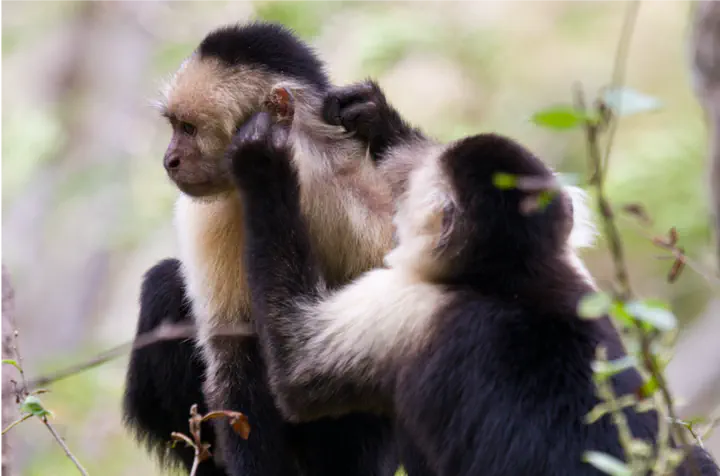Female sociability and fitness in primates
 Grooming capuchin females. Photo by Fernando A. Campos
Grooming capuchin females. Photo by Fernando A. Campos
In many mammals, including humans, individuals form groups in which social relationships can be highly differentiated (i.e., some individuals form strong relationships, while others only have weak ones). As a result, some individuals are socially better integrated than others, which appears to be beneficial for these individuals. For example, other researchers have documented that social integration and support in humans have positive effects on health and longevity (e.g., Yang et al., 2016), and increase the reproductive success (Page et al., 2017). Similarly, highly social female dolphins, horses, and baboons (here, here, or here) exhibit greater fitness parameters, such as offspring survival or longevity, than socially less well integrated individuals.
One of my interests is in understanding how female sociability in primates confers these benefits. A study on white-faced capuchins that I conducted during my postdoc with Dr. Linda Fedigan at the University of Calgary showed that infants of highly social females exhibited greater survival during stable periods, but these infants were at greater risk of dying or disappearing during periods of alpha male replacements (Kalbitzer et al. 2017). Probably, new alpha males, which often commit infanticide in this species, are more likely to target the infants of highly social, and therefore central, females. This example illustrates that sociability can also have costs and, therefore, can represent a trade-off in some species. – See the feature in the New Scientist.
Our study suggested a mechanism that imposes costs on sociability (i.e., being spatially central in the group during alpha male replacements), but what are the mechanisms that provide benefits to sociability? I am currently investigating this question with a variety of approaches, including social network analyses, analyzing alloparenting behavior, and comparing c-peptide levels among female capuchins.
Furthermore, I extended this research to red colobus monkeys in Uganda in collaboration with Dr. Colin Chapman. This species has a very different type of diet (leaves) from capuchins (mostly fruit and insects), and we are using dynamic social network analyses to investigate how social relationships and the benefits of sociability change depending on the distribution, availability, and nutritional quality of food resources, and how this variation affects offspring survival. For this investigation, we are building on more than a decade of demographic data and collecting data on feeding and social behavior within an ecologically well assessed habitat.